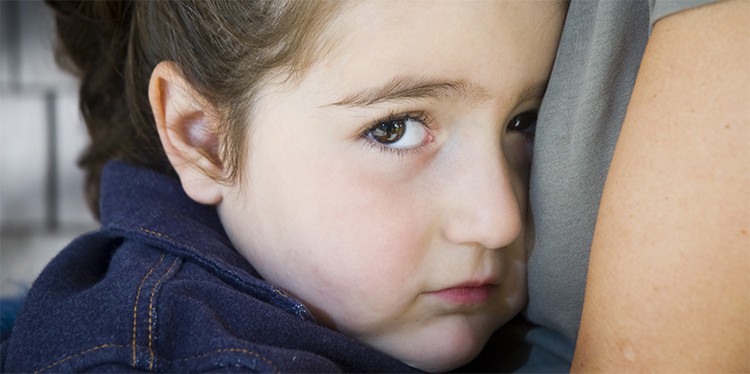Separation anxiety and your preschooler – what can parents do?

Fall often brings changes in school routines – and for little ones going to preschool or daycare, these transitions can be filled with tearful goodbyes. Pediatric neuropsychologist Dr. Kristen Wiik has some perspective and helpful hints for parents who might be dealing with separation anxiety. “If you’re concerned about separation anxiety, you’re doing the right thing by seeking solutions,” she explains. “Many parents hear from teachers and daycare providers that their child’s anxiety resolves soon after they leave their child. Unfortunately, this does little to reduce the emotional departures parents are experiencing – but be encouraged that these tough transitions often pass quickly. Sometimes these experiences may be more traumatic for the parents than they are for their kids.”
According to Dr. Wiik, most children experience an increase in separation anxiety around age 12-18 months. This is indeed a normal pattern in children with healthy attachments to their caregiver(s). This anxiety often passes as a child gets older, and reactions to separation anxiety can also change with age.
“When toddlers or young preschoolers have to separate from caregivers, they may scream, cry, try to follow their caregiver or seek physical contact with them, or ask them not to leave,” she explains. “Older preschoolers or school-age children may verbalize worries by asking for reassurance of routines, or when mom or dad (or caregiver) will return. They may also talk about physical symptoms like stomach aches or nausea.”
“In most cases, children of all ages can move past the anxiety within minutes to hours after the separation. They can be distracted by and engaged in play or school, and even enjoy these activities,” assures Dr. Wiik. “At times of transitions though, such as a new school year or the start of a new daycare classroom, it may take a few weeks for the child to settle in and the separation anxiety to decrease. A child’s temperament, for example – if they are more fearful or cautious versus easy going, – can also affect how significant or long-lasting the separation anxiety reaction may be.”
Life stressors, traumas, or other changes that impact a child’s daily routine or sense of safety can increase the likelihood and intensity of separation anxiety. Even less stressful changes like moving into a new home or a change in the child’s caregiving routine can make an easy-going child suddenly exhibit symptoms for some time.
“That’s why preparing for those tough transitions will go a long way in building trust, confidence, and resilience in your child,” she says. “Establishing rituals and being consistent will help both of you work through this transition.”
Dr. Wiik recommends the resource page on the American Academy of Pediatrics website that specifically deals with surviving separation anxiety.
“If you have ongoing concerns about the issue, you can certainly talk to your pediatrician at your child’s next visit.”

